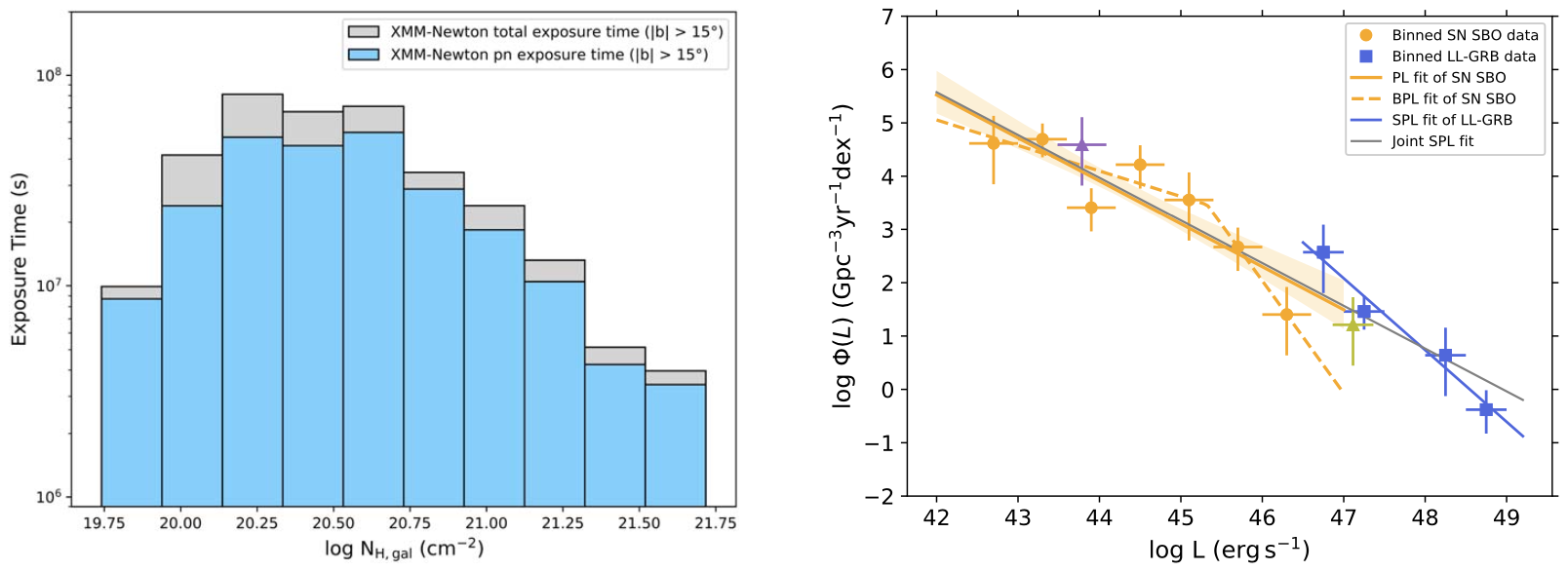XMM-Newton-selected Supernova Shock Breakout Candidates - Notes on Sun et al. 2022
Link to paper: “Luminosity Function and Event Rate Density of XMM-Newton-selected Supernova Shock Breakout Candidates”
Luminosity function and event rate density
The first electromagnetic emission from a core-collapse supernova is the shock breakout. As the shock advances towards the outer edge of the star, a short X-ray and UV burst can be emitted for tens to thousands of seconds. This happens when the optical depth of the shock is c/v, where v is the speed of the shock and c is the speed of light. By analysing these bursts, we can infer the properties of the progenitor star and the physics of the shock. Gamma-ray emission is expected to appear when the shock velocity reaches the relativistic regime. Before the shock breaks out, only neutrinos and gravitational waves can escape from the star.
If I understand correctly, only two such events have been detected before the XMM-Newton search (another paper), and the authors of the present papers have tried to infer some properties from these two events. In this paper they will build on that, using the new 12 shock breakout candidates from the XMM-Newton work to improve their luminosity function and event rate density calculations.
The maximum redshift calculated depends on the detectability of the faintest possible source of that type of transient for that telescope. The number density is then divided by the total time that this maximum volume is monitored.
A fast transient is defined here as a source that exhibits drastic flux changes on timescales shorter than the typical exposures of observations made by a telescope pointed at a particular region of the sky defined by its field of view.
Maximum distance
To calculate the maximum distance, a series of simulations have been performed. A simulated breakout has a given redshift, peak luminosity, X-ray spectrum, light curve and intrinsic absorption. After simulating the data, the source is considered detected if the signal-to-noise ratio of the detected source counts is greater than 5, the total net source counts are not less than 62, and the ratio of peak flux to average flux is at least greater than 1.9.
Luminosity function and event rate
The luminosity function of the sample can be fitted with a single or broken power law. The local event rate densities then depend on the model used, but result in about 47500 Gpc-3 yr-1.
The event rate is interpreted as the sum of the collapse of all types of progenitors (blue and red supergiants as well as Wolf-Rayet stars). The low luminosity function is dominated by red supergiants and Wolf-Rayet stars. The blue supergiant progenitors have higher peak luminosities and an event rate denisty an order of magnitude lower than the other two.
Watch out
The Einstein spacecraft is expected to give great results, detecting 10 to 10s of new shock breakouts per year.
Further reading
See Chapter 5 in Waxman & Katz 2017.
